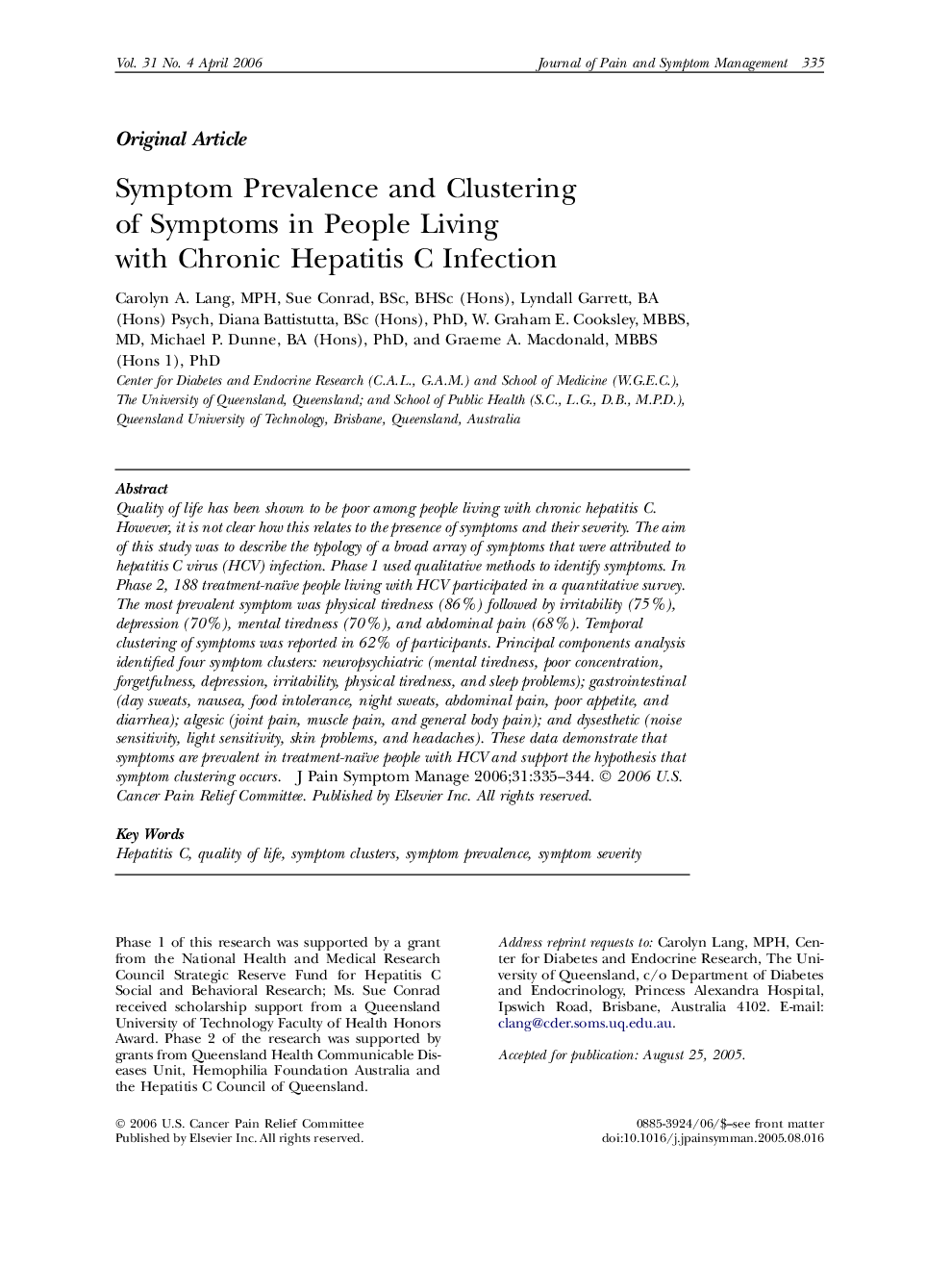| Article ID | Journal | Published Year | Pages | File Type |
|---|---|---|---|---|
| 2730249 | Journal of Pain and Symptom Management | 2006 | 10 Pages |
Quality of life has been shown to be poor among people living with chronic hepatitis C. However, it is not clear how this relates to the presence of symptoms and their severity. The aim of this study was to describe the typology of a broad array of symptoms that were attributed to hepatitis C virus (HCV) infection. Phase 1 used qualitative methods to identify symptoms. In Phase 2, 188 treatment-naïve people living with HCV participated in a quantitative survey. The most prevalent symptom was physical tiredness (86%) followed by irritability (75%), depression (70%), mental tiredness (70%), and abdominal pain (68%). Temporal clustering of symptoms was reported in 62% of participants. Principal components analysis identified four symptom clusters: neuropsychiatric (mental tiredness, poor concentration, forgetfulness, depression, irritability, physical tiredness, and sleep problems); gastrointestinal (day sweats, nausea, food intolerance, night sweats, abdominal pain, poor appetite, and diarrhea); algesic (joint pain, muscle pain, and general body pain); and dysesthetic (noise sensitivity, light sensitivity, skin problems, and headaches). These data demonstrate that symptoms are prevalent in treatment-naïve people with HCV and support the hypothesis that symptom clustering occurs.
